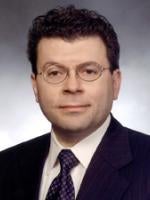Solvay, S.A. v Honeywell International
Affirming the federal district court, the U. S. Court of Appeals for the Federal Circuit concluded that a claim was invalid under § 102(g)(2), i.e., the invention was made in this country by another who had not abandoned, suppressed or concealed it, finding that the secret practice of the invention in the United States was prior art to the claimed invention. Solvay, S.A. v Honeywell International, Case No. 2012-1660 (Fed. Cir., Feb. 12, 2014) (Dyk, J.) (Newman, J., dissenting).
The central issue in the case involved the scope of prior art under 35 U.S.C. 102(g)(2) and, in particular, whether an invention conceived by a foreign inventor and reduced to practice in the United States qualified as prior art under that section. As the Court explained, a patent is invalid under § 102(g)(2) if the claimed invention was made in this country by another inventor before the priority date of the application for patent. Under pre-America Invents Act (pre-AIA) law, which applies in this case, making an invention requires conception and reduction to practice. The Court explained that under § 102(g)(2), conception must occur in another country but in such circumstances, “the work constituting the reduction to practice may be performed in the United States by or on behalf of the inventor.”
There was no dispute that the subject matter of the claim in dispute was conceived and reduced to practice in Russia by the Russian inventors. It was further undisputed that Honeywell then replicated the Russian process in the United States pursuant to a joint research agreement between Honeywell and the Russian inventors. The invention was made public through a Russian patent application solicited by the Russian inventors. Solvay challenged, inter alia, whether Honeywell’s duplication of the Russian invention should inure to the benefit of the Russian inventors under § 102(g)(2) because the Russian inventors did not expressly ask Honeywell to duplicate the Russian process. The Court held that the joint research agreement between Honeywell and the Russians authorized Honeywell to practice the Russian invention and specifically contemplated that they would do so. Thus, according to the Court, the invention was made in this country on behalf of the inventors and as such qualified as prior art under § 102(g)(2).
Judge Newman dissented from the opinion, arguing that the decision creates a new class of prior art outside of the interference context of 35 U.S.C. § 102(g).
Practice Note: Although the America Invents Act (AIA) obviated 35 U.S.C. § 102(g) et seq., the relevance of this section of the code is likely to continue for several years. Practitioners are advised to maintain records to establish possible defensive prior art.




 />i
/>i

